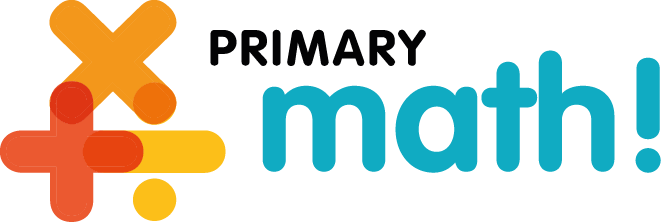Addressing struggles in primary math with hands-on approaches
Wiki Article
Unveiling the most effective Shortcuts for Addressing Mathematics Troubles Promptly
In the domain name of maths, performance is key. Grasping faster ways can change the method individuals come close to issues. From leveraging the distributive home to using fast multiplication methods, these techniques improve both speed and precision. Additionally, identifying patterns simplifies intricate computations. As one discovers these methods, they might discover shocking understandings that can change their mathematical experience. What are one of the most reliable strategies that can be easily integrated right into daily method?Mastering Psychological Mathematics Techniques
Exactly how can one improve their estimation speed without relying upon calculators? Understanding psychological mathematics techniques supplies a sensible solution. By utilizing strategies such as breaking numbers into smaller sized, manageable components, people can streamline complex calculations. When including two-digit numbers, rounding each number to the local 10 can make mental addition much easier prior to readjusting back to the initial worths.An additional reliable method is to exercise reproduction tables extensively, making it possible for quick recall of products (struggles in primary math). Additionally, recognizing patterns in numbers can help with quicker estimations, such as using the properties of also and odd numbers. Regular practice through games and puzzles can further fine-tune these skills, making psychological mathematics more user-friendly
Inevitably, cultivating confidence in one's math capacities permits quicker decision-making and boosts general mathematical efficiency. By incorporating these techniques, anyone can significantly improve their estimation rate.
Making Use Of the Distributive Home
The Distributive Residential or commercial property is a fundamental concept in maths that simplifies calculations by permitting reproduction throughout enhancement or subtraction. It is vital for students to grasp its application via useful examples, which can boost their analytic skills. Additionally, identifying common blunders can even more solidify their understanding and stop errors in future calculations.Recognizing the Distributive Residential Property
Mastering the distributive building can considerably simplify mathematical computations. This fundamental residential property states that when multiplying a solitary term by a sum or distinction, one can disperse the multiplication throughout each term within the parentheses. In the expression a(b + c), one can reword it as abdominal muscle + air conditioning. This technique not only enhances calculations but additionally boosts understanding of how numbers communicate (struggles in primary math). The distributive home is particularly useful in algebra, where it assists in simplifying expressions and solving equations. In addition, it lays the foundation for extra complex ideas, such as factoring and polynomial procedures. By grasping the distributive residential property, pupils can develop a solid foundation for dealing with a wide variety of mathematical challenges successfullyPractical Instances Illustrated
Why is it important to apply the distributive home in functional circumstances? The distributive property allows individuals to simplify complex calculations, making problem-solving much more effective. When computing the complete price of numerous things, one can utilize the expression 5(2 + 3) to discover the total cost of 5 things valued at $2 and $3. By dispersing, the computation comes to be 5 × 2 + 5 × 3, generating a quicker outcome of $25. One more example is in algebra, where simplifying expressions like 3(x + 4) can be accomplished via circulation, leading to 3x + 12. Such applications highlight the efficiency of this residential or commercial property in numerous real-world circumstances, enhancing both rate and accuracy in mathematical problem-solving.Typical Errors to Stay Clear Of
Although the distributive building is a powerful tool in maths, typical errors can cause wrong outcomes. When pupils forget to disperse the coefficient to each term within parentheses, one regular error takes place. In the expression 3(x + 4), failing to use the property appropriately can lead to omitting the reproduction, yielding an inaccurate answer. Another error includes defalcating the home by including rather than multiplying, particularly when unfavorable indications are entailed. Additionally, students might overlook to streamline the result, which can unknown mistakes made during circulation. Acknowledging and avoiding these challenges can improve problem-solving performance and precision when using the distributive residential property in numerous mathematical contexts.Quick Reproduction Shortcuts
In the domain name of quick reproduction shortcuts, methods like multiplying by powers of 10 and the doubling and halving method attract attention. These methods can significantly simplify computations, making them much more accessible. Comprehending these faster ways can improve effectiveness in mathematical analytic.Multiplying by Powers of 10
When multiplying by powers of 10, the procedure comes to be extremely simple, as the operation mostly entails changing the decimal factor. For circumstances, increasing a number by 10 requires moving the decimal one location to the right, while increasing by 100 demands a change of two places. This simplicity reaches bigger powers, where each additional zero shows another decimal shift. Increasing 5.6 by 1,000 results in 5,600. This technique considerably improves rate and precision, as individuals can rapidly imagine the result without complicated estimations. Such efficiency is specifically useful in mental math or when time is restricted, enabling fast analytic in various mathematical contexts. Grasping this technique is essential for any individual intending to enhance their math a fantastic read skills.Doubling and Cutting In Half Technique
The Doubling and Halving Method provides a reliable approach for fast reproduction, particularly when dealing with also numbers. This strategy entails changing a multiplication trouble into a simpler kind by either increasing one of the numbers and cutting in half the other. To calculate 16 × 25, one can cut in half 16 to get 8 and dual 25 to obtain 50, resulting in 8 × 50, which equates to 400 (struggles in primary math). This technique simplifies estimations, making them extra convenient. It is especially helpful in mental math, enabling individuals to function through troubles quickly and properly. By leveraging this method, specialists and trainees can enhance their numerical dexterity, thereby improving overall effectiveness in mathematical jobs
Effective Division Methods
Although department commonly positions challenges for numerous learners, employing reliable approaches can significantly simplify the procedure. One efficient approach is the usage of suitable numbers, which involves rounding the divisor and dividend to less complicated worths that are close to the original numbers. This technique makes psychological estimations much more manageable. Another technique is the evaluation technique, where students can locate a rough answer before carrying out the precise department, offering a useful standard for accuracy.
In addition, the long division technique stays a staple for dividing larger numbers. By breaking the process right into smaller sized, more absorbable actions, learners can preserve quality. The repeated reduction approach can also be practical, particularly for those that deal with even more abstract concepts. By systematically deducting the divisor from the dividend, individuals can envision the process. Generally, these strategies can improve department abilities, leading to quicker and a lot more accurate problem-solving capabilities.
Rapid Enhancement and Subtraction Techniques
Just how can students enhance their speed and accuracy on top of that and reduction? One see effective method is to use psychological mathematics approaches, such as breaking numbers into smaller sized, a lot more convenient components. When including 47 and 36, one can first include 40 and 30 to obtain 70, then add the continuing to be 7 and 6 to get here at 83. This strategy streamlines estimations and minimizes mistakes.An additional strategy involves using the number line for aesthetic students, assisting them to see the connections between numbers and enhance their understanding. In addition, exercising with devices like flashcards can reinforce fast recall of basic amounts and differences.
Learners can profit from acquainting themselves with benchmark numbers, such as rounding to the closest ten, which enables for quicker evaluations. By incorporating these methods into their practice, learners can considerably enhance their speed and accuracy in basic math operations.
Leveraging Estimation for Quick Calculations
Estimation works as an effective device for improving computation rate, enhancing psychological math approaches effectively. By rounding numbers to their local whole values, people can streamline complicated estimations, making it less complicated to reach an approximate result rapidly. For instance, when confronted with an issue like 198 + 267, rounding to 200 + 270 returns a quick price quote of 470, permitting the solver to examine the accuracy of the last response.Additionally, evaluation is particularly helpful in scenarios entailing multiplication and division. By rounding aspects to less complex numbers, one can swiftly gauge approximate products or ratios. This technique not only saves time yet likewise aids in identifying possible mistakes in computations.
Identifying Patterns and Formulas
Patterns and solutions are crucial tools in maths that enable individuals to fix problems much more successfully. Acknowledging these patterns allows learners to recognize partnerships between ideas and numbers, which can simplify complicated calculations. Identifying the quadratic formula (ax ^ 2 + bx + c = 0) assists in fast options to numerous formulas.Patterns in sequences, such as math or geometric progressions, help individuals anticipate future terms without comprehensive computations. Formulas, on the other hand, function as shortcuts, enabling for faster problem-solving by encapsulating complex relationships right into manageable expressions.
Frequently Asked Questions
How Can I Boost My Emphasis While Fixing Mathematics Problems Quickly?
To boost emphasis while resolving mathematics issues rapidly, one can eliminate disturbances, established certain goals, practice mindfulness strategies, take routine breaks, and maintain a regular research routine to boost concentration and psychological clarity.What Apps or tools Assist with Quick Mathematics Problem-Solving?
Various devices and apps, such as Photomath, Microsoft Math Solver, and Desmos, boost quick math problem-solving. These resources supply detailed solutions, graphing capacities, and instant responses, making them important for experts and students alike.Exist Particular Mathematics Shortcuts for Standardized Examinations?
Yes, particular math shortcuts for standardized examinations include strategies like evaluation, understanding number homes, using the procedure of elimination, and understanding typical solutions. These techniques boost speed and precision, improving overall examination efficiency.
How Do I Practice Mathematics Shortcuts Properly?
To practice math shortcuts successfully, individuals need to regularly resolve varied troubles, make use of online resources, and participate in timed drills. Consistency and reflection on errors boost understanding, eventually bring about improved speed and accuracy in computations.Can Shortcuts Be Applied to Complicated Math Issues?
Shortcuts can undoubtedly be used to complex math problems, although their effectiveness varies. Mastery of foundational principles and strategic thinking enables people to streamline processes, making it simpler to deal with elaborate computations efficiently.By employing strategies such as breaking numbers right into smaller sized, workable parts, individuals can simplify complex calculations. Additionally, identifying patterns in numbers can promote quicker computations, such as using the residential or commercial properties of even and weird numbers. Estimate serves as an effective device for improving estimation rate, matching mental mathematics methods efficiently. By rounding numbers to their closest whole worths, individuals can simplify intricate computations, making it much easier to arrive at an approximate result promptly. Identifying these patterns permits useful source students to determine connections between ideas and numbers, which can simplify intricate computations.
Report this wiki page